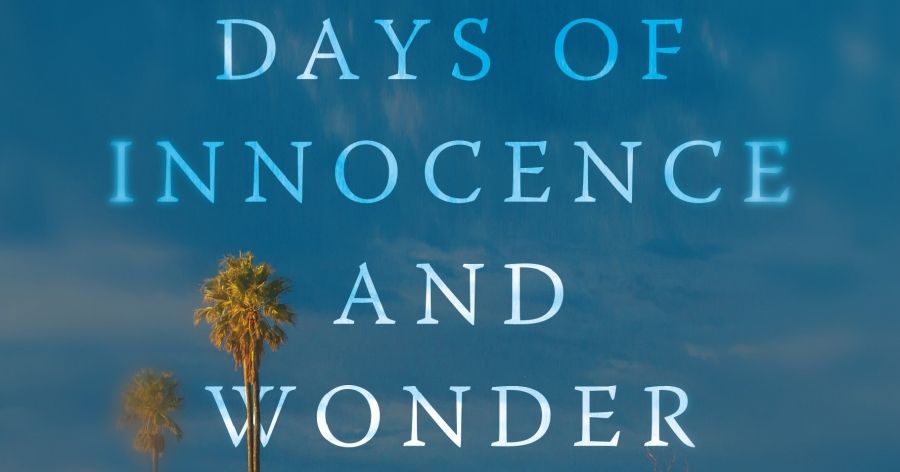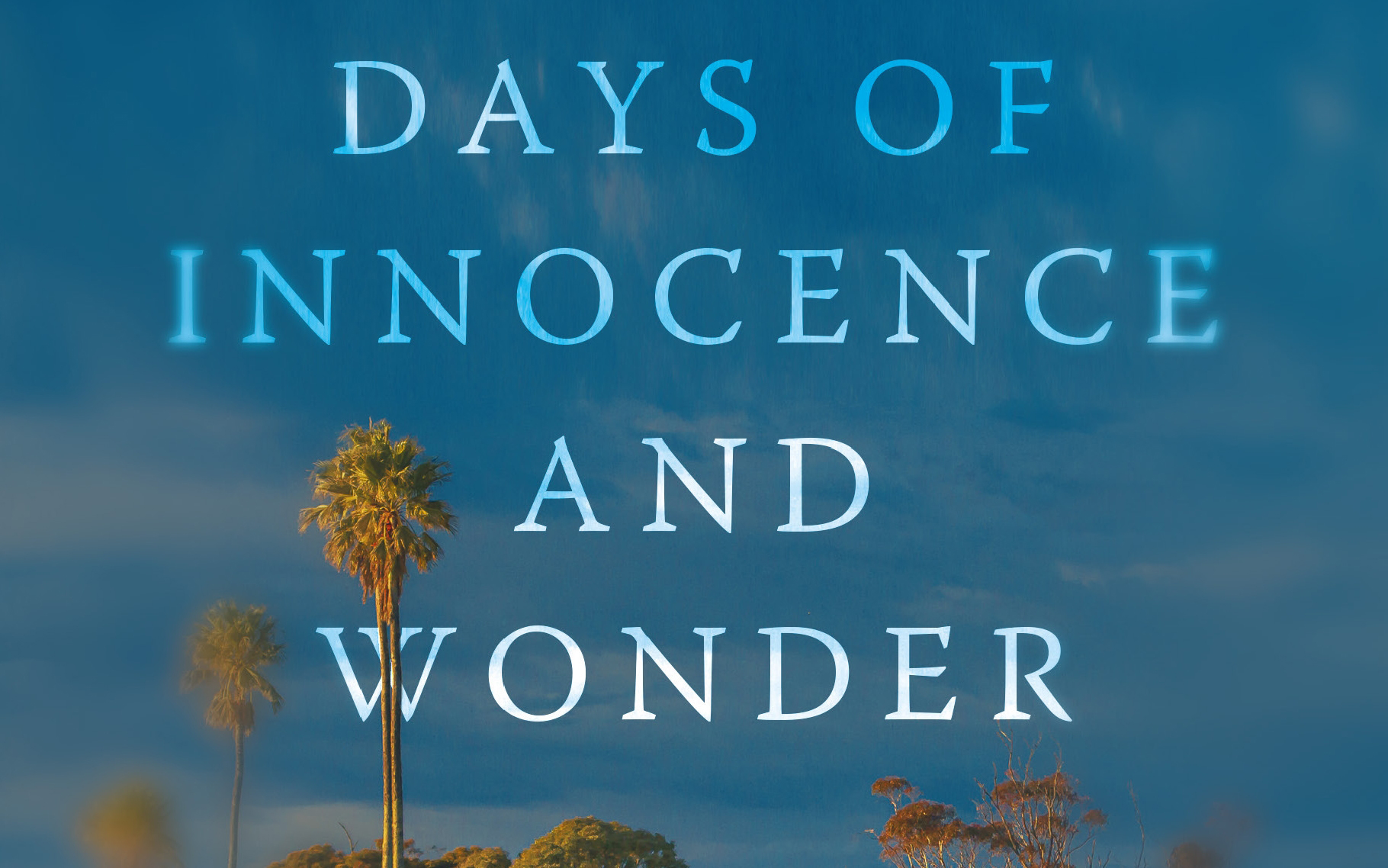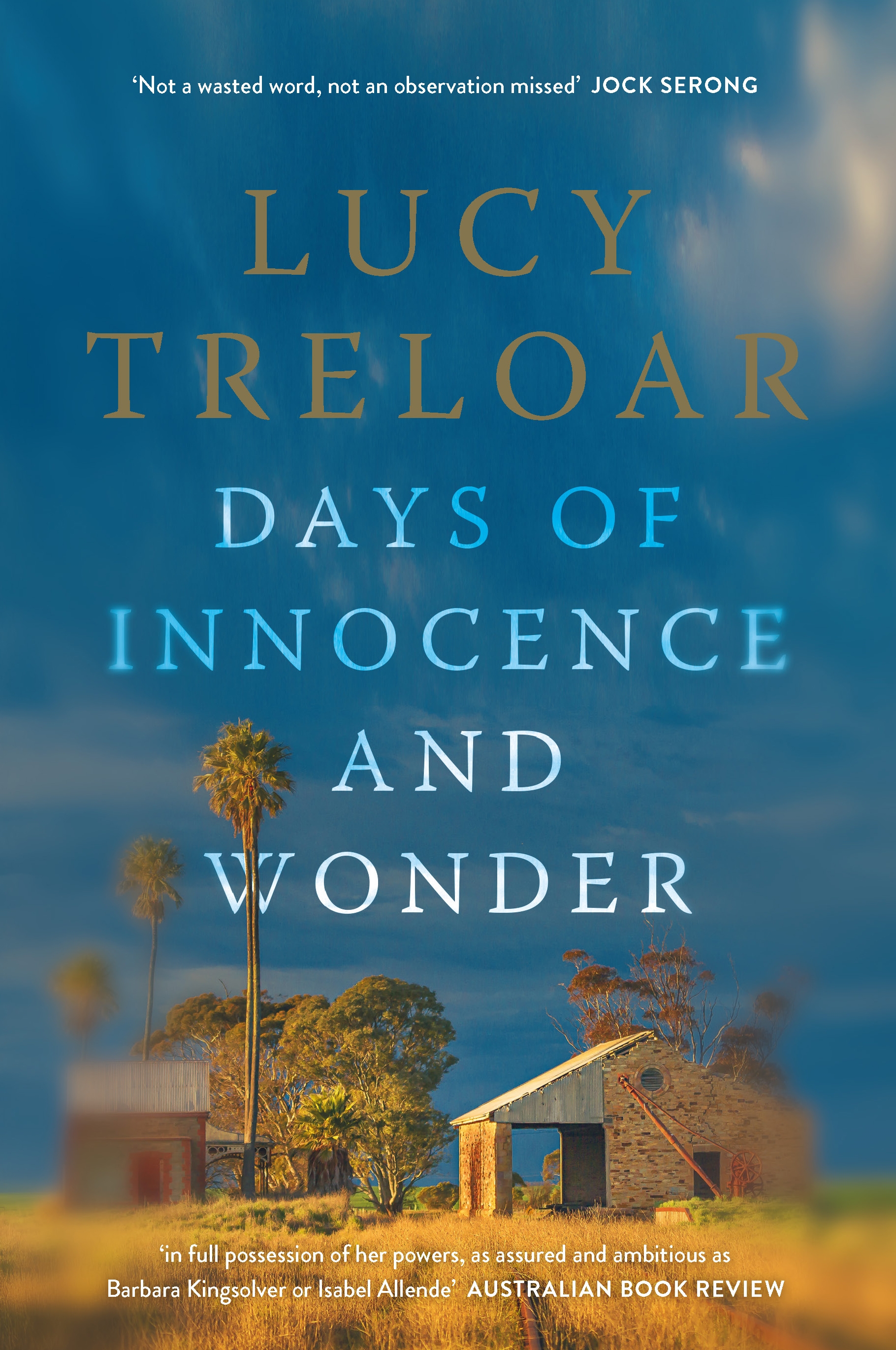
- Free Article: No
- Contents Category: Fiction
- Review Article: Yes
- Article Title: ‘Long-ago man’
- Article Subtitle: A thorough exploration of character
- Online Only: No
- Custom Highlight Text:
Through the gates of a kindergarten in Melbourne’s inner-north, a man strikes up a conversation with two little girls, which violently alters the course of their lives. The bolder of the pair, a child who ‘runs at life’, goes with him. The meeker stays behind, becoming the serial predator’s only known survivor.
- Featured Image (400px * 250px):

- Alt Tag (Featured Image): Laura Elizabeth Woollett reviews ‘Days of Innocence and Wonder’ by Lucy Treloar
- Book 1 Title: Days of Innocence and Wonder
- Book 1 Biblio: Picador, $34.99 pb, 321 pp
- Book 1 Cover Small (400 x 600):

- Book 1 Cover (800 x 1200):

It goes without saying that individuals respond to trauma differently. While some undergo arrested development, others may be forced to mature early; studies have even shown that experiencing childhood trauma makes the body and brain age faster. That Till often seems older and more self-possessed than a typical twenty-three-year-old of her generation is likely a deliberate choice on Treloar’s part. Even at her most reckless, fleeing across the border into South Australia, squatting at an abandoned railway station, and drinking with a rapacious rural cop, Till has her wits about her and is capable of defending herself. Her motives are sometimes obscure, but never self-destructive.
The most unusual choice that Till makes – and the most critical to the narrative – is to settle at the aforementioned railway station on the outskirts of a moribund town, Wirowie. With the aid of YouTube DIY videos, she begins renovating the station and later accepts an offer from the owner to purchase it. While the notion of a musician in her early twenties having the means to buy property on a whim (even at a discounted rate) after two years of successive lockdowns is somewhat hard to swallow, this narrative turn grounds Till in Wirowie, allowing Treloar to unpack central questions around land and community.
Treloar is no stranger to these themes; her début, Salt Creek (2015), draws on the story of her settler ancestors in the Coorong region, while Wolfe Island (2019) follows the sole inhabitant of a climate change-ravaged island. As Till becomes increasingly intertwined with the residents of Wirowie and its surrounds, gaining employment and enlisting a local’s help with her renovations, the community’s fault lines are thrown into relief. These include issues of police corruption and violence against women, along with a history of colonial terror.
In the novel, narrated at a remove from Till, Treloar employs an undefined yet omniscient first-person voice, which has the effect of both preserving the protagonist’s mystery and inviting scrutiny – of her behaviour and of the systems around her. Whether this voice is that of E in the afterlife, à la Susie Salmon in Alice Sebold’s The Lovely Bones (2002), another version of Till, or someone entirely different, hardly matters. At times, the narrator’s interjections may strike readers as patronising or sanctimonious (‘Remember that you are judging a traumatised six-year-old. Remember that’). Nonetheless, Treloar’s willingness to step back from her protagonist rather than explaining (and encouraging sympathy with) her every thought and action is refreshing, allowing Till to be fallible without luxuriating in her flaws. It also lends dignity to the townspeople, whose occasional prickliness towards Till is understandable, well before their backstories are made manifest.
In the main, the novel’s supporting characters are fleshed-out and compelling. Till’s interactions with the townswomen bristle with significance, while the predator feels specific even in his shadowiness. By comparison, Till’s love interest, Ed, is a nonentity, and their scenes together have little purpose beyond demonstrating the gradual dissolution of Till’s commitment phobia.
Treloar’s sentences often delight. Through well-placed descriptions, she evokes the strengths of her female characters in a way that is both economical and suggestive of transcendence: Till’s mother, Zoe, dressed in vintage Comme des Garçons, appears ‘like some rich ragamuffin, an avenging angel’; Marian is ‘a tall redheaded woman with her hair streaming down her back like Boadicea’; Bev is ‘a big Buff Orpington strutting around, scratching at doorways, pecking at people to make them jump’. Recurring ideas and images, such as Zoe’s ‘categories of womanhood’ and the killing of the last thylacine, hint at Till’s textured inner world while signalling Treloar’s wider preoccupation with women, nature, and violence.
As a work of outback noir, Days of Innocence and Wonder delivers some genuinely chilling moments within a distinctive rural setting, although aficionados of the genre may find the first half of the novel to be overly languorous. Meanwhile, aspects of the central crime require a level of suspended belief (particularly for readers familiar with Brunswick), as does the action-packed denouement, which clashes tonally with the slow burn of the earlier sections. As a meditation on the long-reaching consequences of violence, and the healing properties of land and community, Treloar’s third novel is more successful (even though it can wear its morals a bit too heavily) and offers a hopeful counterpoint to literary examinations of misogyny like Charlotte Wood’s The Natural Way of Things (2015). It is also a thoughtful exploration of character and the limits of individual consciousness, which showcases Treloar’s confidence as a stylist.


Comments powered by CComment